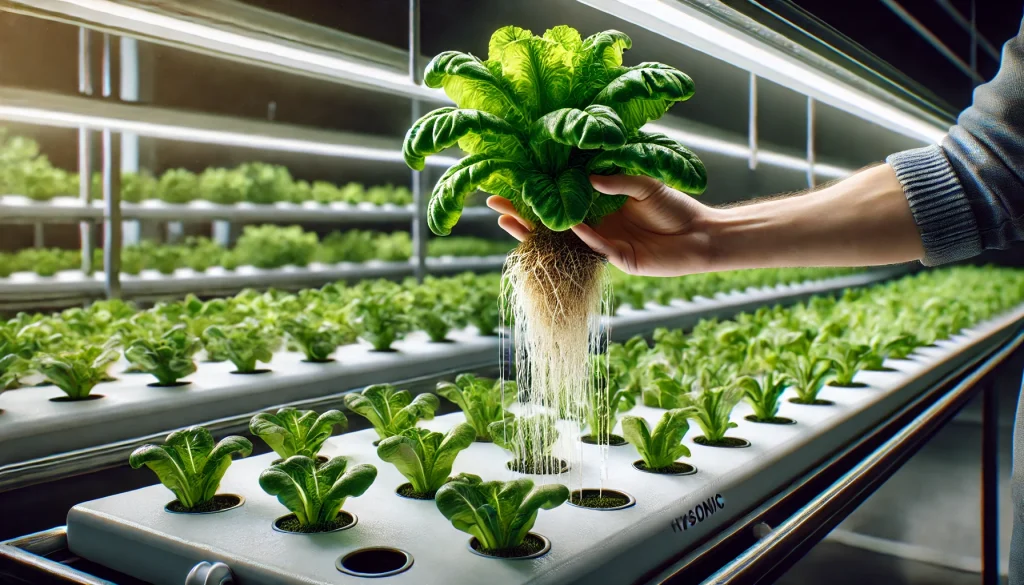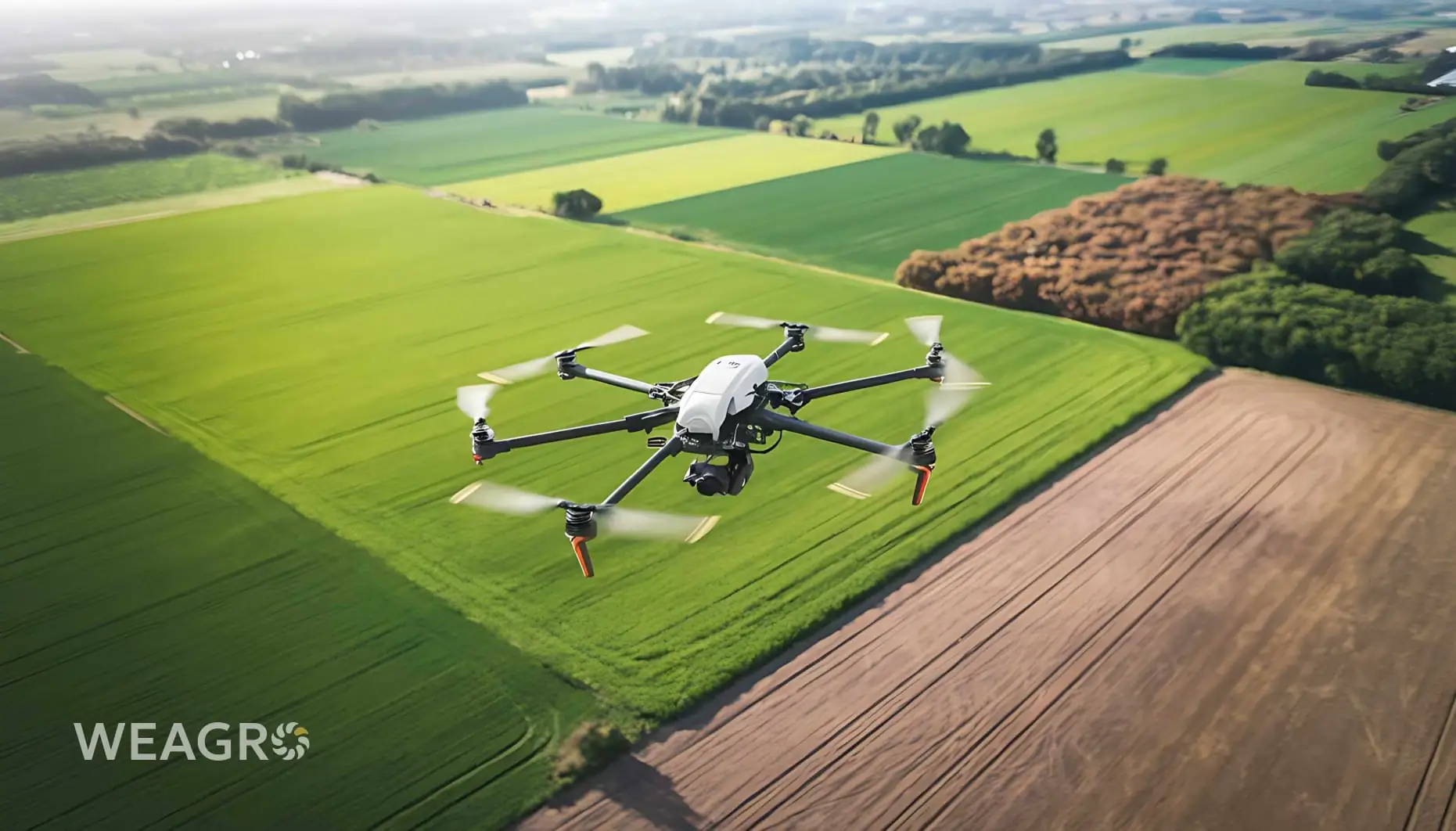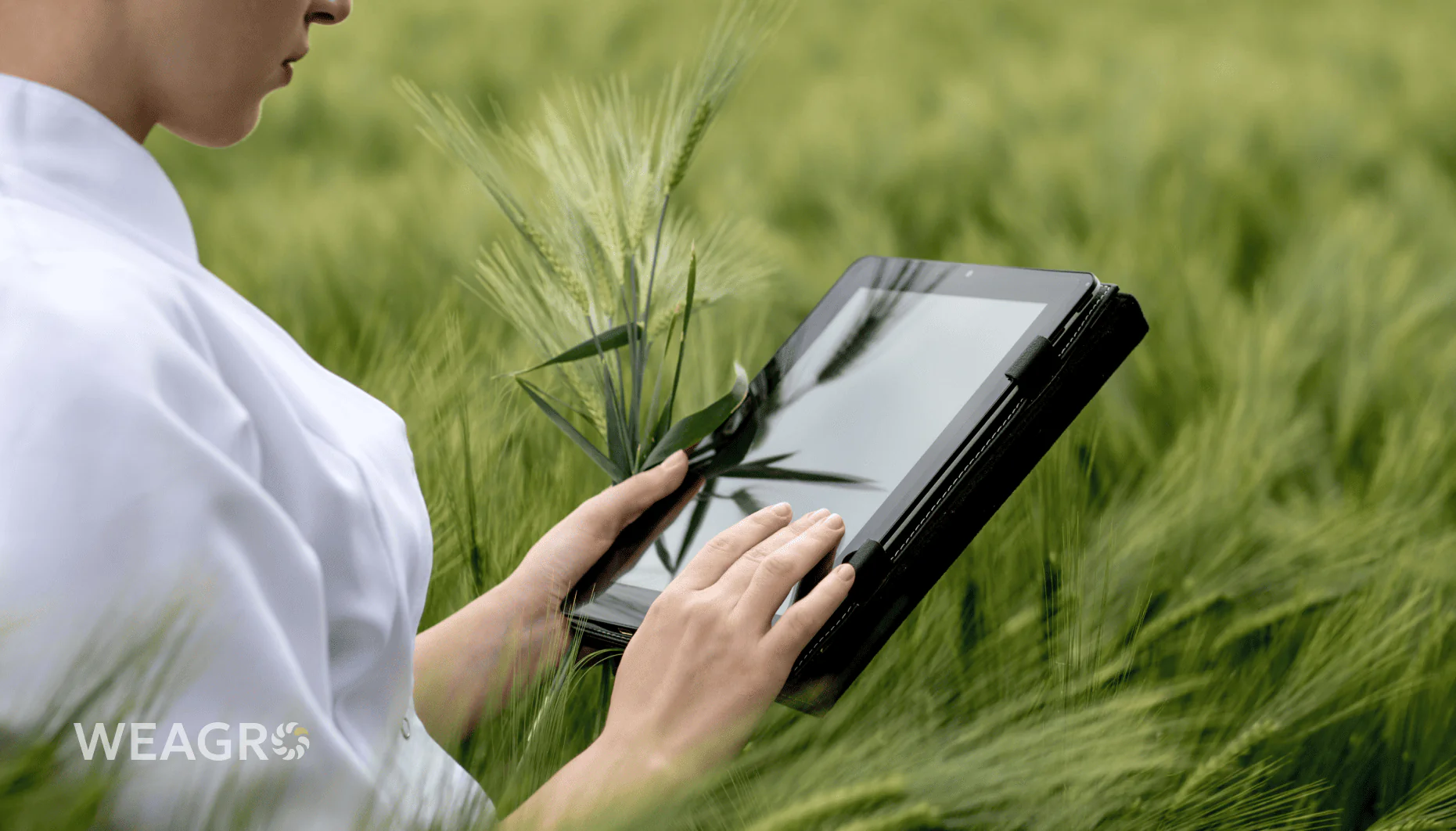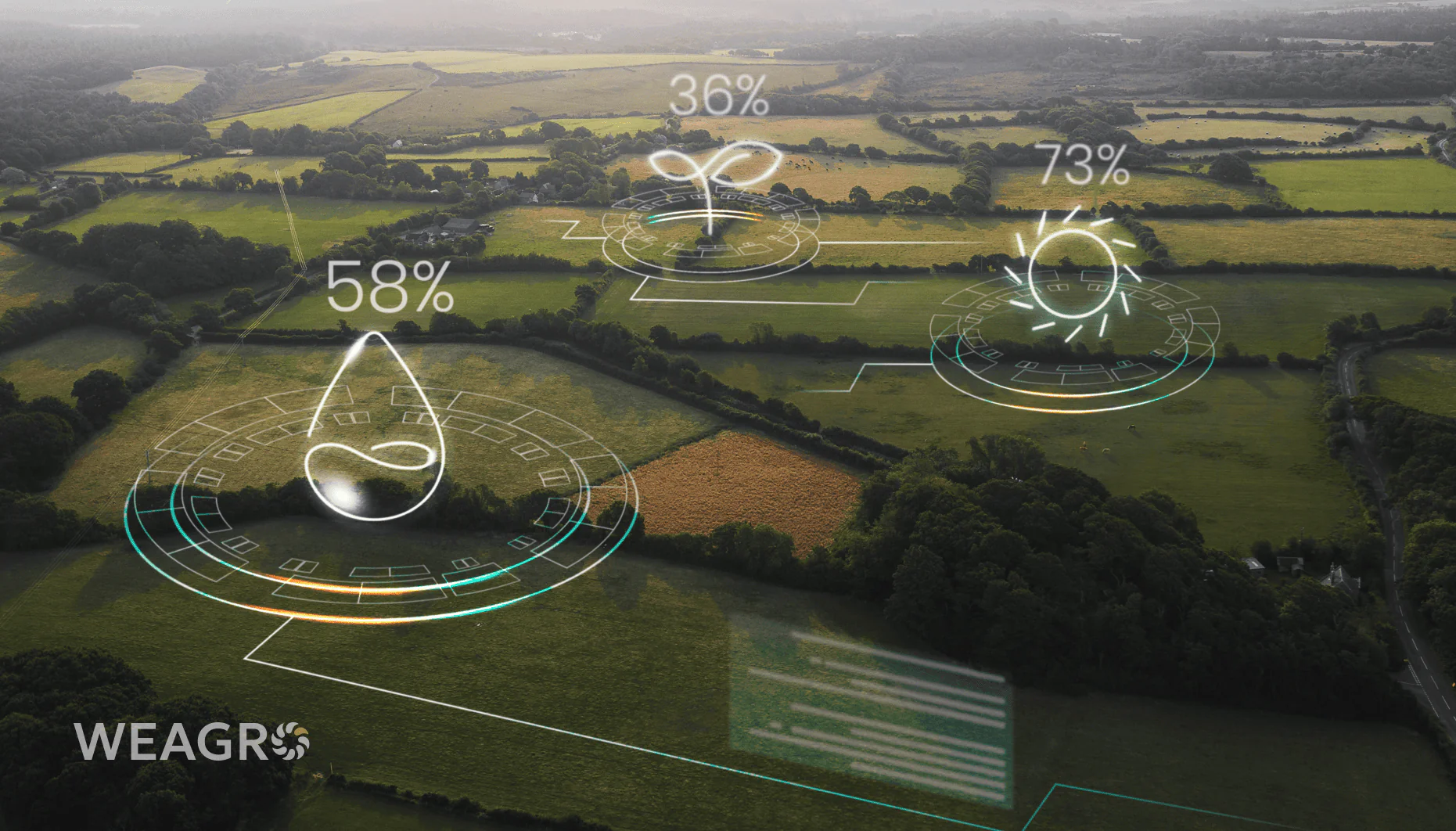Hydroponics is an innovative method of growing plants without soil that is rapidly gaining popularity in the modern world. In this article, we will examine what hydroponics is, its advantages and disadvantages, the algorithm for implementing this technology, and development prospects in Ukraine. This information will be useful for farmers interested in the latest agricultural methods.
What is Hydroponics
Hydroponics is a technology for growing crops in artificial environments without using soil. The word comes from the Greek “hydro” (water) and “ponos” (work). With this method, the plant receives all necessary nutrients not from soil, but from a moisture-air or solid porous substrate that provides oxygen access to the roots.
The crop roots are placed in a substrate that can be inert (expanded clay, perlite, mineral wool) or organic (coconut fiber, peat). A nutrient solution containing all necessary macro- and microelements in optimal proportions for the specific variety circulates through the base. The composition and delivery regime are controlled automatically using sensors and equipment.
There are several main types of hydroponic systems that differ in the method of delivering nutrient solution and substrate type:
- deep water culture system (DWC) — plant roots are directly in flowing solution;
- nutrient film technique (NFT) — the mixture flows in a thin layer through the root zone of plants in horizontal channels;
- aeroponics — roots hang freely in air, periodically irrigated with aerosol;
- ebb and flow system — substrate with crops is flooded with mixture, which then drains back into the reservoir;
- drip irrigation — solution is delivered directly to the root zone of each plant through a system of tubes with drippers.
Although the first attempts at soilless crop cultivation are known from ancient times (Hanging Gardens of Babylon, Aztec “floating gardens”), scientific justification of what hydroponics is appeared only in the 19th century. In the 1860s, German botanists Julius von Sachs and Wilhelm Knop experimentally proved that plants can grow in mineral salt solutions without soil.
In the 1930s, Dr. William F. Gericke from the University of California rediscovered and popularized this technology. He developed the first successful commercial system and introduced the term “hydroponics.” In subsequent decades, the method was actively developed and improved, finding application not only in greenhouse farming but also in space exploration and interior landscaping.
Modern hydroponic systems are technological complexes with automatic control of all environmental parameters: lighting, temperature, humidity, nutrient solution composition, etc. This allows creating optimal conditions for plant growth and obtaining consistently high yields regardless of external factors.
Read also: Precision Farming in Ukraine: Definition and Prospects
Advantages and Disadvantages of Hydroponics
Hydroponics has a number of significant advantages compared to traditional agriculture. However, there are certain disadvantages that should be considered when implementing this technology.
Advantages of Hydroponics
Main advantages of the hydroponic method:
- optimized resource use (up to 90% water savings);
- higher yields, better product quality in shorter time;
- ability to grow plants in regions with unfavorable soil and climate conditions;
- control of every stage and process (lighting, temperature, humidity, nutrient solution composition);
- no need for herbicides and reduced pesticide use;
- efficient space utilization, possibility of vertical farming.
Water savings are achieved through the closed-loop use of nutrient solution. Unlike traditional irrigation, where a significant portion of liquid evaporates or seeps into soil, in hydroponic systems the mixture circulates in a closed circuit, absorbed by plants only in necessary quantities. This is especially relevant in regions with limited water resources.
According to expert estimates, crop yields in hydroponics can be 30-50% higher than in soil. This is achieved through optimal nutrition, absence of competition with weeds, and loss of nutrients. Additionally, in closed systems, multiple harvests per year can be obtained regardless of weather conditions.
Hydroponic farms can be located in close proximity to consumers, even within cities. This reduces product transportation distance and increases freshness. Vertical farms with multi-tier plant placement achieve maximum efficient use of facility space.
Complete control of growing conditions allows avoiding many problems inherent to traditional crop production — moisture deficit or excess, temperature fluctuations, uneven lighting. In closed systems, the risk of crop damage from pests and diseases is also reduced, decreasing the need for protective agents.
Read also: GIS technologies in Ukrainian agriculture
Disadvantages of Hydroponics
Despite numerous advantages, hydroponics as a plant growing method has certain disadvantages:
- high initial costs for equipment and materials;
- need for knowledge/skills to set up and maintain the system;
- risks of crop loss in case of equipment failure or human error;
- dependence on uninterrupted power supply;
- limited range of plants suitable for hydroponic cultivation.
The cost of a fully functional system with automatic parameter control can reach tens of thousands of dollars. Additionally, materials must be regularly purchased — substrates, fertilizers, crop protection products. However, these costs are mostly recovered through higher yield and product quality.
Effective management of a hydroponic farm requires understanding of physiological processes in crops and skills in working with modern equipment. Agricultural entrepreneurs who previously engaged only in traditional crop production may need additional training or involvement of specialized professionals.
Failure of microclimate control systems or nutrient solution balance disruption can lead to rapid crop death if the problem is not detected and resolved in time. Therefore, it is very important to ensure reliable, uninterrupted functioning of all hydroponic farm components, as well as regular monitoring of plant condition.
Due to high automation of production processes, hydroponic farms are critically dependent on stable power supply. Power outages can disrupt lighting, ventilation, and nutrient solution delivery systems, negatively affecting plant development.
Not all agricultural crops perform equally well in hydroponic systems. Lettuce, greens, tomatoes, cucumbers, peppers, strawberries, and ornamental plants have proven most successful. However, most grains, legumes, root vegetables, and fruit trees are still more profitable to grow traditionally.
However, almost all these disadvantages can be minimized through careful planning, proper equipment selection, and constant system monitoring. Through the WEAGRO online service, farmers can purchase necessary equipment and consumables for implementing hydroponics with installment payments. This makes innovative technologies more accessible to small and medium agricultural producers.
Implementing Hydroponic Technology
For successful hydroponics implementation, it is necessary to follow a certain algorithm of actions:
- Determine the range of crops planned for cultivation and expected production volumes.
- Choose the type of hydroponic system (deep water culture, nutrient film technique, aeroponics, etc.) depending on the plant and scale.
- Select premises or greenhouse with microclimate control capability.
- Purchase necessary equipment (trays, pumps, lighting, sensors, etc.) and consumables (substrate, fertilizers).
- Install and configure the hydroponic system according to manufacturer instructions.
- Plant crops and provide optimal growing conditions (lighting, temperature, humidity, nutrient solution delivery).
- Regularly monitor system operation and crop condition, respond promptly to deviations.
Through the WEAGRO online service, agricultural entrepreneurs can purchase everything necessary for starting a hydroponics business with deferred payment. This allows optimizing startup costs and faster return on investment.

Mistakes that Occur when Implementing Hydroponics
Main mistakes during transition to hydroponics are:
- incorrect choice of system type or equipment without considering plant characteristics;
- disruption of nutrient balance or solution pH;
- insufficient control over microclimate and system operation;
- ignoring preventive measures against pests and diseases;
- using poor-quality planting material or substrate.
Avoiding these mistakes requires careful planning of all hydroponics implementation stages, from crop selection to organizing finished product sales. Reserve funding should also be provided for force majeure circumstances.
Hydroponics Development Prospects in Ukraine
Ukraine has significant potential for hydroponic crop production development due to qualified personnel, relatively cheap electricity, and rising demand for environmentally clean products. Dozens of hydroponic farms already operate in the country, growing greens, vegetables, berries, and ornamental plants.
The driver of hydroponics development in Ukraine is growing demand for fresh vegetable products and greens in large cities. Hydroponic farms on the outskirts of metropolitan areas can provide year-round stable supplies to retail chains, restaurants, and hotels. Industrial regions of eastern and southern Ukraine are especially promising in this regard.
Another development direction is greenhouse cultivation of berry crops, particularly strawberries, with subsequent export to EU countries. Ukraine is already among the top five global exporters of frozen berries, and hydroponics allows extending the harvest season and improving fresh product quality.
Application of the method in protected ground conditions (greenhouses, vertical farms) is especially promising, allowing stable yields regardless of season. According to expert data, vegetable yields can be 3-5 times higher than in open ground, with water resource savings up to 90%.
Technology development in Ukraine is constrained by high equipment and consumable costs, as well as insufficient farmer awareness of this method’s advantages. However, through system improvements, government support, and private business initiatives, these barriers are gradually being overcome.
WEAGRO actively promotes hydroponics business among Ukrainian farmers, providing information support, expert consultations, and the opportunity to purchase necessary goods with deferred payment. This makes innovative agricultural production methods more accessible and lays the foundation for sustainable industry development.









